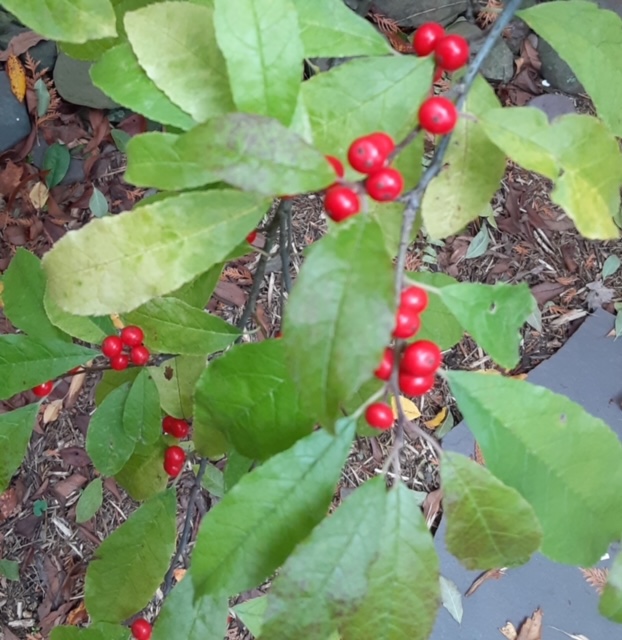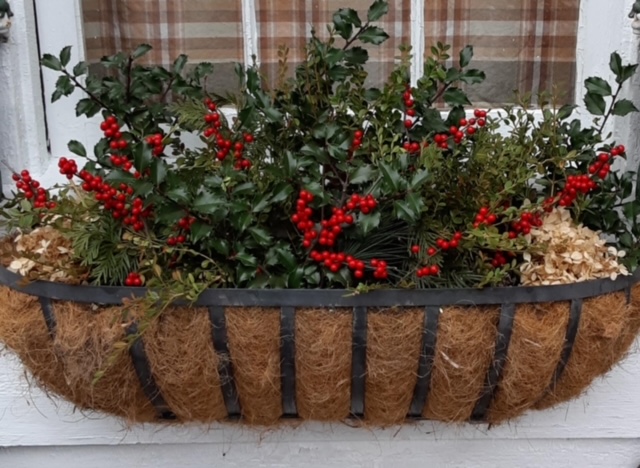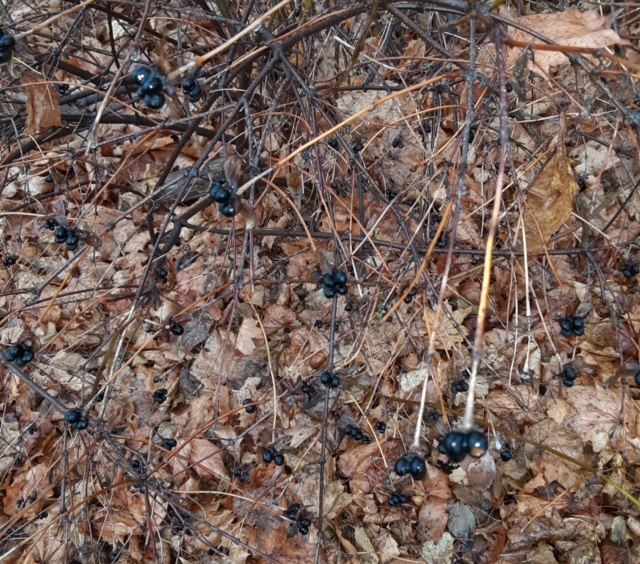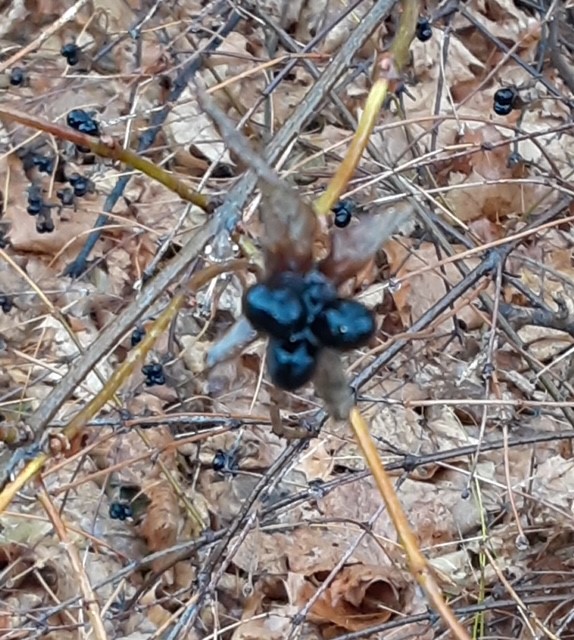By: Susan Sprout
Black Jetbead
There has been a case of mistaken identity…and I did it! The story begins in April when I passed by a brushy, unkempt-looking shrub blooming gloriously with single, white flowers. One quick look, and I thought “Mock Orange” and kept right on walking.
Cut to December. Same walk, same shrub without leaves and flowers, same unenlightened me. Then I saw them – small bunches of shiny black, beadlike fruits, surrounded by brittle, sharply-pointed little leaves or sepals. How interesting! How gorgeous! How NOT Mock Orange! After photographing them, I kept right on walking – straight back to my resource books. I had discovered Black Jetbead, Rhodotypos scandens, a member of the Rosaceae or Rose family. My April mistakes were many and obvious – petal number, leaf stem and shape, seed amounts in each fruit or capsule, bloom time and arrangement on stalks, wrong family!

I now know a new shrub to look for during fall and winter. With its leaves and four-petaled flowers gone, its one-third inch long black fruits are visible and easily identified as belonging to Black Jetbead, a non-native shrub from Eastern Asia. It was brought to the U.S. in 1866 as an ornamental and has escaped into the wilds, dispersed by birds. To many, it is considered invasive, displacing native plants with its dense, arching branches that restrict tree seedling establishment.
My sincere apologies, Mock Orange. I will try to make it up to you in print during your May bloom time when I see your beautiful five-petaled white flowers on my walks.
Decorating with Winterberry
The week after PlantsGiving is PlantsDecorating! That’s what I have been doing this week. Whether using living or man-made lookalikes, we do put up a lot of plant, shrub, and tree parts to “spruce up” our homes and businesses, inside and out, for the December/January Holiday Season. Garlands of pine, cedar, juniper surround the doors while their circular counterparts are placed on doors in colorful welcome. As welcome as we can be, considering the pandemic.
You are probably familiar with the prickly Japanese holly commonly used in landscaping. Many people, myself included, use its cut evergreen branches with berries on as decorations. There is another rather common native plant you may find in marshy spots that is not an evergreen like Japanese holly, but has the bright red berries just like it. Both are in the same family AQUIFOLIACEAE. It is known as Winterberry.

Another common name for it is Black Alder. It is not really a true Alder because true Black Alders are members of the Birch family and have little cones, not red berries. Forty years ago, I dug up a Winterberry sapling and planted it near my house. Although it wasn’t in its happy place with wet feet, it has matured and grown to about ten feet in height and provides us with enough lovely red berries for winter decorations.

Find out what’s underfoot with NPC member and environmental educator, Susan Sprout! Catch up on past issues of Underfoot: Introduction & Bloodroot, Trout Lily & Coltsfoot, Blue Cohosh & Dutchman’s Breeches, Ground Ivy & Forget-Me-Nots, Goldthread & Wild Ginger, Common Mullein & Sweet Woodruff, Aniseroot & Butterfly Weed, Myself , Jewelweed & Soapwort, American Pennyroyal & Great Lobelia, Boneset & Common Ragweed, Pokeweed & Blue Chicory, Prickly Cucumber & Wintergreen, Beech Drops & Partridge Berry, Pipsissewa & Nostoc, Witch Hazel, Plantsgiving.



